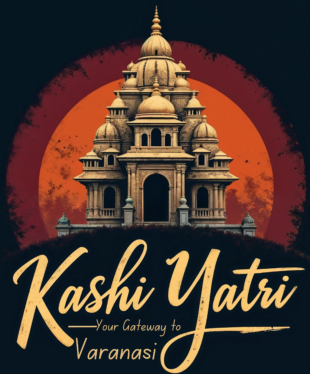The Enchanting Ganga Aarti at Varanasi: A Deep Dive into Tradition and Spirituality
Introduction
The Ganga Aarti at Varanasi is a mesmerizing spectacle that draws thousands of devotees and tourists to the banks of the sacred river Ganges. This revered ritual is a vibrant expression of faith and devotion, combining music, lights, and spirituality into a breathtaking experience. The Aarti is performed at Dashashwamedh Ghat, one of Varanasi’s oldest and most significant ghats, steeped in history and spirituality. This article explores the essence of the Ganga Aarti, its rituals, significance, and the experience it offers to those fortunate enough to witness it.
Understanding the Ganga Aarti
What is Ganga Aarti?
Ganga Aarti is a Hindu religious ritual performed on the banks of the Ganges River, also known as Ganga. This ceremony is held daily, both in the morning and evening, conducted by a group of priests or pandits. During the Aarti, hymns are chanted, and lamps (diyas) are lit and floated on the river, symbolizing the worship of the Ganges.
The ritual is not just an act of devotion but a deep acknowledgment of the river’s sanctity in Hindu culture. The Ganges is considered a living goddess, embodying purity and spiritual significance. Hindus believe that participating in the Aarti or even being present during this ritual can cleanse one’s sins and bring about spiritual renewal.
The Dashashwamedh Ghat
Significance of Dashashwamedh Ghat
Dashashwamedh Ghat, where the Ganga Aarti takes place, holds a special place in the hearts of devotees. It is believed to be the site where Lord Brahma performed a grand Yajna (sacrifice) to welcome Lord Shiva. The name “Dashashwamedh” translates to “the ghat of the ten sacrificed horses,” symbolizing the importance of this location in Hindu mythology.
The ghat is renowned for its vibrant atmosphere, especially during the evening Aarti. As dusk falls, the area transforms into a sea of lights and sounds, with the glow of countless lamps reflecting on the Ganges, creating a captivating spectacle. The ghat has become a focal point for tourists and pilgrims alike, seeking to experience the spiritual energy that permeates the air.
The Ritual of Ganga Aarti
What Happens During the Aarti?
The Ganga Aarti is a highly orchestrated ritual that combines elements of music, dance, and spirituality. It begins with the arrival of devotees, who gather in large numbers along the steps of the ghat. The atmosphere is charged with anticipation as the sun sets and the first notes of traditional hymns fill the air.
- Preparation for the Aarti: As the time for the Aarti approaches, the priests prepare the altar by placing an idol of Ganga and other deities. They light incense and offer flowers, creating a serene environment filled with aromatic fragrances. Devotees often bring their own offerings, including flowers, fruits, and diyas.
- Lighting of Diyas: The highlight of the Aarti is the lighting of the diyas, small oil lamps that are floated on the Ganges. As the priests chant hymns and invoke the blessings of the river goddess, they light these lamps, creating a mesmerizing sight. The flickering flames dance in the breeze, reflecting the spirituality of the moment.
- Chanting of Hymns: The priests chant mantras and hymns dedicated to the Ganges, extolling its virtues and significance. The rhythmic sounds of bells, cymbals, and other musical instruments accompany their chants, creating a harmonious blend of sound that resonates with the heart and soul of the onlookers. The collective chanting and music elevate the atmosphere, making it an unforgettable experience.
- Offering of Aarti: The culmination of the ritual involves the Aarti ceremony itself, where the priests hold the diyas in a circular motion before the river, symbolizing the offering of light to the goddess Ganga. Devotees also raise their hands in reverence, often joining in the chants and singing along. The energy in the crowd is palpable, as everyone becomes part of a collective expression of devotion.
Spiritual Significance of Ganga Aarti
A Cleansing Ritual
For many Hindus, participating in the Ganga Aarti is a deeply spiritual experience. It represents an opportunity to cleanse oneself of sins and seek forgiveness from the divine. The Ganges is believed to possess purifying properties, and taking part in the Aarti is considered a way to connect with the divine and attain spiritual purification.
The ritual also serves as a reminder of the transient nature of life. As the flames flicker and the diyas float downstream, devotees are encouraged to reflect on their lives, let go of negativity, and embrace positivity. The Aarti is a powerful symbol of hope, renewal, and the cyclical nature of existence.
The Experience of Attending Ganga Aarti
A Mesmerizing Atmosphere
Witnessing the Ganga Aarti is an unforgettable experience that leaves a lasting impression on the hearts of those who attend. The vibrant atmosphere, combined with the sounds of devotional songs and the aroma of incense, creates an otherworldly ambiance. Tourists and locals alike are drawn to the spectacle, their faces illuminated by the warm glow of lamps.
- Connection with Nature: The setting along the banks of the Ganges enhances the experience. The gentle lapping of the river against the steps, the cool evening breeze, and the sight of the sky transforming from hues of orange and pink to deep blue create a serene backdrop for the ritual. Participants often find themselves in a meditative state, connecting with nature and the divine.
- Community Spirit: The Ganga Aarti fosters a sense of community among attendees. People from various backgrounds, languages, and cultures gather for a shared purpose: to pay homage to the river and seek spiritual blessings. Strangers often join hands in prayer, creating bonds that transcend cultural and geographical boundaries.
- Cultural Experience: The Aarti is not just a religious ritual; it is a cultural event that showcases the rich heritage of Varanasi. The traditional music, attire of the priests, and the elaborate decorations all reflect the city’s artistic spirit. Visitors are often captivated by the vibrant colors and intricate details, making it a feast for the senses.
Practical Information for Attendees
When to Attend the Aarti
The Ganga Aarti is held daily at Dashashwamedh Ghat, with the evening ceremony attracting the largest crowds. The best time to arrive is at least an hour before the Aarti begins, allowing for ample time to find a good spot to witness the ritual. The Aarti usually starts around sunset, varying slightly with the seasons.
What to Bring
Visitors are encouraged to dress modestly, respecting the cultural significance of the ritual. Bringing offerings such as flowers and diyas adds to the experience, allowing attendees to participate actively in the ceremony. Cameras are welcomed, but it’s important to be respectful and avoid disrupting the proceedings.
Conclusion
The Ganga Aarti at Varanasi is more than just a ritual; it is a profound experience that encapsulates the essence of faith, spirituality, and community. As the sun sets over the Ganges, the flames of the diyas illuminate the night, creating a magical atmosphere that resonates with the hearts of all present. For those who seek spiritual renewal and a deeper connection with their faith, the Ganga Aarti offers a unique opportunity to witness the beauty of devotion in one of the holiest cities in India.
As Varanasi continues to be a beacon of spirituality, the Ganga Aarti remains a timeless tradition, drawing people from all walks of life to experience the enchanting dance of light and sound on the banks of the Ganges. Whether you are a devotee seeking blessings or a traveler exploring the cultural tapestry of India, the Ganga Aarti is an event that will leave you inspired and transformed.







